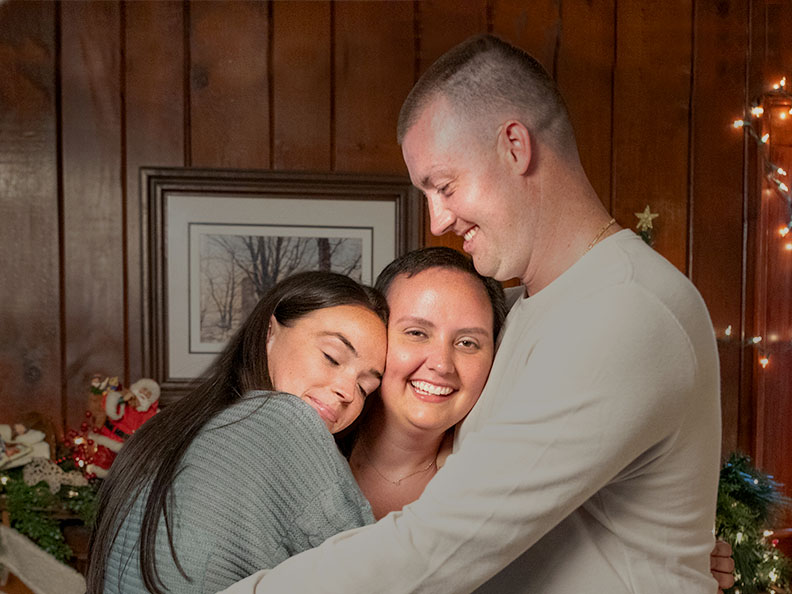Your gift is 100% tax deductible
What Is Chronic Myelomonocytic Leukemia (CMML)?
Chronic myelomonocytic leukemia (CMML) is a rare type of blood cancer. It starts in blood-forming cells in the bone marrow. CMML is slow growing, but over time the leukemia cells can spill out into the blood and reach other parts of the body, such as the spleen.
About 15% to 30% of people with CMML go on to develop acute myeloid leukemia (AML).
How CMML starts
CMML starts when blood-forming cells (known as blood stem cells) mutate and stop working correctly.
New blood cells are formed in your bone marrow. A small fraction of these blood-forming cells are blood stem cells. These stem cells are needed to make new cells. When a stem cell divides, it makes 2 cells: one that stays as a stem cell and another that keeps changing and dividing to make blood cells.
Blood cells that might be affected by CMML
There are 3 main types of blood cells: red blood cells, white blood cells, and platelets.
Red blood cells
Red blood cells pick up oxygen in the lungs and carry it to the rest of the body. These cells also bring carbon dioxide back to the lungs.
White blood cells
White blood cells, (also called leukocytes) help the body fight infection. There are several different types of white blood cells.
- Lymphocytes are immune cells in the bone marrow, blood, and lymph nodes. Some kinds of lymphocytes make antibodies that help your body fight germs. Other kinds kill invading germs by making toxic substances that damage them.
- Granulocytes are white blood cells that destroy bacteria. They contain granules that are made up of enzymes and other substances that can destroy germs. Types of granulocytes include neutrophils, basophils, and eosinophils.
- Monocytes also help protect the body against germs. The early cells in the bone marrow that turn into monocytes are called monoblasts. When monocytes leave your bloodstream and go into body tissues, they become macrophages, which can destroy germs by surrounding and digesting them. Monocytes are the type of blood cell most affected in people with CMML.
Platelets
Platelets are small pieces that break off from a large cell in the bone marrow called a megakaryocyte. Platelets help your blood to clot by plugging up damaged areas of blood vessels.
Features of chronic myelomonocytic leukemia
CMML belongs to a group of blood disorders known as myelodysplastic/myeloproliferative neoplasms (MDS/MPNs). MDS/MPNs have 2 types of features:
- Myelodysplastic: The blood stem cells in these conditions don’t mature into healthy, mature blood cells (red blood cells, white blood cells, or platelets). The immature blood cells (blasts) don’t work the way they should, and they tend to die quickly.
- Myeloproliferative: Too many blood stem cells become one or more type of blood cell, resulting in too many of these types of cells. The number of these blood cells goes up slowly over time.
CMML is often divided into 2 subtypes, based on whether myelodysplastic or myeloproliferative features are more prominent. To learn more, see Chronic Myelomonocytic Leukemia (CMML) Subtypes, Stages, and Risk Groups.
The main problem in people with CMML is having too many monocytes (at least 500 per mm3 or per uL of blood). Often, the monocyte count is much higher, causing a person’s total white blood cell count to become very high as well.
People with CMML also tend to have too few of at least one other type of blood cell. This is known as a cytopenia. They might have too few red blood cells (anemia), too few neutrophils (neutropenia), and/or too few platelets (thrombocytopenia).
Very early forms of blood cells, called blasts, make up no more than 20% of the cells in the blood and bone marrow in people with CMML.
Many people with CMML have an enlarged spleen (an organ that lies just below the left rib cage).
The DNA inside the CMML cells does not have certain gene changes that are typically seen in other blood disorders, such as the BCR/ABL1 gene change (Philadelphia chromosome) that is seen in the cells of chronic myeloid leukemia (CML).
For more about these gene changes, see Tests for Chronic Myelomonocytic Leukemia.
- Written by
- References

Developed by the American Cancer Society medical and editorial content team with medical review and contribution by the American Society of Clinical Oncology (ASCO).
National Cancer Institute. Myelodysplastic/Myeloproliferative Neoplasms Treatment (PDQ) – Health Professional Version. 2024. Accessed at https://www.cancer.gov/types/myeloproliferative/hp/mds-mpd-treatment-pdq on January 23, 2025.
Padron E. Chronic myelomonocytic leukemia: Management and prognosis. UpToDate. 2024. Accessed at https://www.uptodate.com/contents/chronic-myelomonocytic-leukemia-management-and-prognosis on January 23, 2025.
Padron E, Gurbuxani S. Chronic myelomonocytic leukemia: Clinical features, evaluation, and diagnosis. UpToDate. 2024. Accessed at https://www.uptodate.com/contents/chronic-myelomonocytic-leukemia-clinical-features-evaluation-and-diagnosis on January 23, 2025.
Last Revised: March 7, 2025
American Cancer Society medical information is copyrighted material. For reprint requests, please see our Content Usage Policy.
American Cancer Society Emails
Sign up to stay up-to-date with news, valuable information, and ways to get involved with the American Cancer Society.



